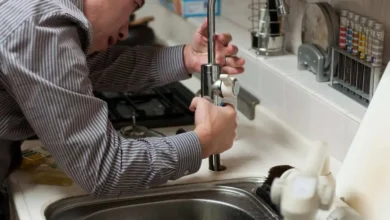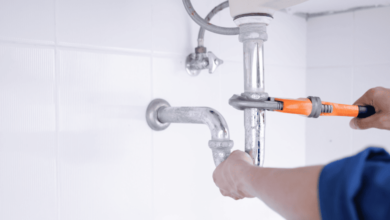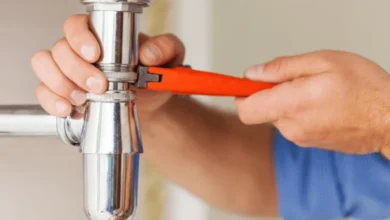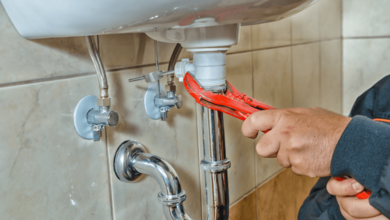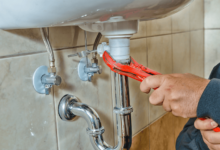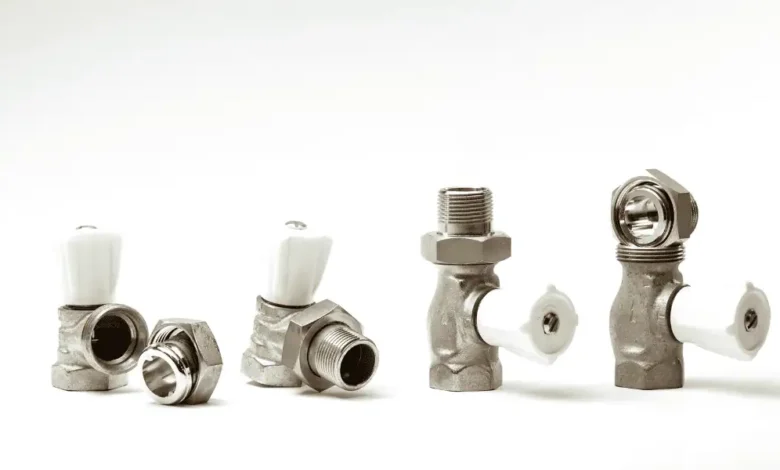
If you own a home built between the 1970s and 1995s, there’s a good chance your plumbing system uses polybutylene (PB) pipes. While these gray or blue pipes were once hailed as a cost-effective alternative to copper, they’ve since gained a notorious reputation for brittleness, leaks, and catastrophic failures. As a homeowner, plumber, or DIY enthusiast, understanding how to manage these aging systems is critical—and it starts with one often-overlooked component: the polybutylene shut off valve.
Polybutylene Shut-Off Valves: Must-Know Facts
In this article, I’ll explain why these specialized valves matter, how they work, and how choosing the right shut-off valve can save you from expensive water damage, insurance headaches, and sleepless nights.
Why Polybutylene Pipes Are a Problem
First, a quick recap. Polybutylene was widely used in U.S. homes for decades due to its low cost and easy installation. But over time, a glaring flaw emerged: the material degrades when exposed to chlorine in municipal water supplies. This leads to tiny cracks, sudden bursts, and leaks—often hidden behind walls or under floors until it’s too late.
Compounding the issue are the original fittings and shut-off valves. Many were made of plastic or cheap metals that corrode or crack under stress. Even if your PB pipes haven’t failed yet, outdated valves increase the risk of leaks at connection points, where water pressure is highest.
How Polybutylene Shut Off Valves Work
A shut-off valve is your plumbing system’s emergency brake. It lets you control the water flow to specific fixtures (like sinks or toilets) or the entire house during repairs or leaks. But not all valves are created equal.
Polybutylene shut-off valves are specifically designed to address the unique challenges of PB piping:
- Material Compatibility: They use compression fittings or transition adapters that securely grip polybutylene without stressing the pipe (a common issue with standard valves).
- Durability: High-quality brass or reinforced plastic bodies resist corrosion and handle the thermal expansion/contraction of PB.
- Leak Prevention: Compression-style mechanisms create a tight seal without requiring heat (which can warp PB pipes).
Think of them as a “bridge” between older polybutylene systems and modern plumbing practices. Without them, even a minor repair could turn into a major leak.
Why You Need to Replace Old Valves at Earliest
If your home still has original PB valves, here’s the hard truth: they’re a ticking time bomb. Here’s why upgrading matters:
- Prevent Catastrophic Leaks: A failed valve can lead to thousands of dollars in water damage. Insurance may not cover polybutylene-related claims.
- Simplify Repairs: Modern valves make it easier to shut off water during emergencies or upgrades.
- Compliance: Many plumbing codes now require PB systems to use approved valves and fittings for safety.
I’ve seen too many homeowners discover leaks the hard way—often after a valve cracks during routine maintenance. Don’t wait for a crisis.
Choosing the Right Polybutylene Shut Off Valve
Not all replacement valves work with polybutylene. Here’s what to look for:
- Compression Fittings: Avoid solder or glue-style valves. Compression fittings (which use a threaded nut and ferrule) are gentler on PB pipes.
- Brass Construction: Brass valves are durable and less prone to corrosion than plastic.
- Correct Size: Match the valve’s diameter to your existing pipes (common sizes: ½”, ¾”, or 1”).
- Certified Suppliers: Buy from reputable brands or suppliers specializing in polybutylene solutions, like polybutylene shut-off valve options at MaxWarehouse.
For a seamless transition to modern plumbing materials, pair valves with compatible polybutylene fittings to avoid mismatched connections.
Common Signs of a Failing Valve
Even if your polybutylene pipes haven’t failed yet, the shut-off valves themselves can show early warning signs. Keep an eye out for:
- Discoloration or Staining: Yellowed or rust-colored valves may indicate corrosion.
- Mineral Buildup: White crust around joints suggests slow leaks.
- Difficulty Turning: Stiff handles mean internal components are degrading.
- Drips During Use: If water trickles out when the valve is fully closed, it’s time for a replacement.
Identifying these signs early can prevent a small issue from escalating. For example, I once helped a neighbor replace a valve that was barely clinging to the pipe—its plastic body had become so brittle it crumbled at the touch. Don’t let that be you!
The Cost of Waiting: Proactive vs. Reactive Repairs
Replacing valves preemptively might feel unnecessary, but consider this: the average cost of water damage repair in the U.S. is 3,000–10,000, depending on severity. By contrast, a high-quality polybutylene shut-off valve costs under $20, and installation takes under an hour for a DIYer. It’s a no-brainer investment.
Insurance companies are also wary of polybutylene systems. Many now require proof of updated valves and fittings to maintain coverage. One client of mine avoided a denied claim after a pipe burst simply because they’d documented their valve upgrades—proof that foresight pays off.
Tools You’ll Need for a Easy Installation
Beyond a pipe cutter and wrench, keep these handy:
- Pipe Deburring Tool: Smooths edges after cutting for a better seal.
- Adjustable Pliers: Grips compression nuts without stripping them.
- Teflon Tape: Wrap threads on transition fittings for extra leak protection.
- Flashlight: To shed light on tight spaces under sinks or in crawl spaces.
A little prep goes a long way. I learned this the hard way midway through a basement valve swap, scrambling to find a deburring tool at 9 PM!
Installation Tips for DIYers and Pros
Replacing a shut-off valve is manageable with the right tools and patience. Here’s a step-by-step guide:
- Turn Off Water Supply: Shut off the main water line and drain residual water by opening faucets.
- Cut the Pipe Cleanly: Use a PB pipe cutter (not a saw) to avoid jagged edges.
- Slide on the Compression Nut and Ferrule: These parts create the seal when tightened.
- Attach the New Valve: Hand-tighten the nut first, then give it a quarter turn with a wrench—don’t overtighten.
- Test for Leaks: Slowly turn the water back on and inspect the connection.
Pro Tip: If the existing pipe is too short, use a transition coupling or splice in a short section of PEX/CPVC with the right fittings.
Can Brass Valves Outperform Plastic?
While plastic valves are cheaper, brass is the gold standard. It resists chlorine corrosion, handles high water pressure, and won’t warp over time. Look for valves labeled NSF/ANSI 61-certified—this ensures they meet strict safety standards for drinking water systems. Brands like SharkBite and Apollo offer reliable options, available through trusted suppliers like MaxWarehouse.
Winter-Proofing Your Valves
Polybutylene is prone to cracking in freezing temps. Insulate valves with foam sleeves, and let faucets drip during cold snaps to relieve pressure. If a valve freezes, gently thaw it with a hairdryer—never an open flame.
The Bigger Picture: Conservation and Responsibility
A single leaky valve can waste hundreds of gallons monthly. By upgrading, you’re not just protecting your home—you’re conserving water and reducing strain on community resources. It’s a win-win.
Compatibility with Modern Plumbing Materials
Worried about mixing polybutylene with newer pipes like PEX or copper? It’s doable—with caution. Use transition fittings (e.g., PB-to-PEX adapters) to connect materials safely. Modern valves often include these adapters, but double-check sizing and pressure ratings.
Maintenance Advice for Long-Term Safety
Even the best valve needs occasional care:
- Exercise Valves Annually: Turn them on/off to prevent seizing.
- Check for Leaks: Inspect valves during seasonal plumbing checks.
- Monitor Water Pressure: High pressure (above 80 PSI) strains PB systems. Install a pressure regulator if needed.
Wrapping up
Polybutylene plumbing might feel like a relic, but with the right shut-off valves and fittings, you can manage its risks effectively. Whether you’re a homeowner looking to protect your investment, a plumber seeking reliable solutions, or a DIYer tackling a weekend project, upgrading these valves is a small step with huge rewards.
Don’t cut corners—invest in quality components and take action before a drip becomes a flood. Your future self (and your wallet) will thank you. For trusted polybutylene shut-off valves and fittings, explore the selection at MaxWarehouse.
Also read:
